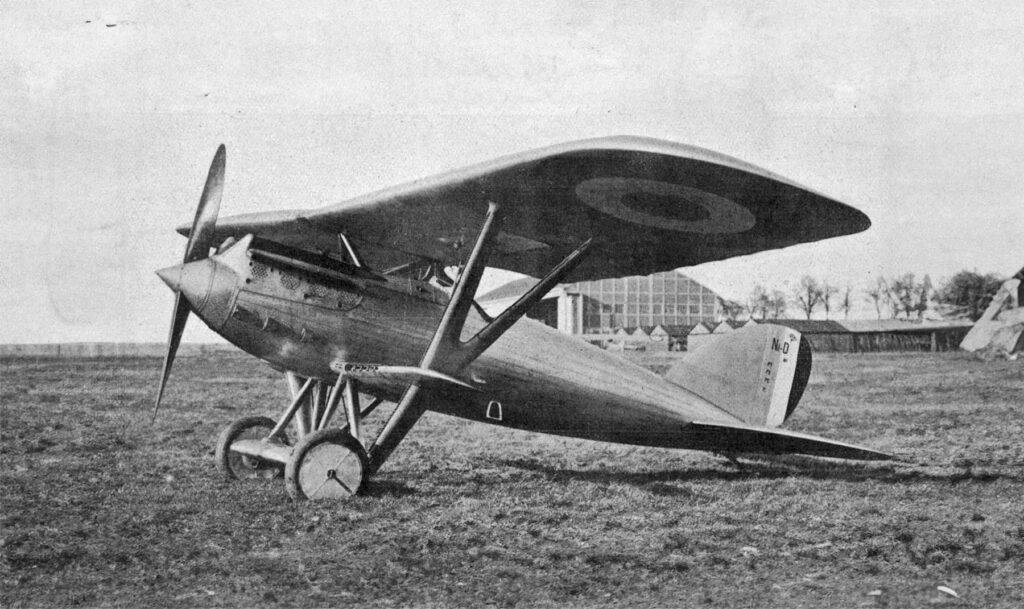The Nieuport-Delage NiD 52, a 1920s French biplane fighter, known for its maneuverability and Hispano-Suiza 12Hb engine, significant in interwar aviation. This article provides a comprehensive overview of the Nieuport-Delage NiD 52, covering its development, design, performance, and military use. It highlights the aircraft’s role in the context of interwar aviation, its technological features, operational history, and its impact on military aviation.
The Nieuport-Delage NiD 52 holds a notable place in the history of military aviation as an important French fighter aircraft of the interwar period. This article delves into the development, design, performance, and operational use of this significant biplane fighter.
History of the Development of the Nieuport-Delage NiD 52:
In the wake of World War I, the rapidly evolving field of aviation saw numerous advancements in aircraft design and technology. The Nieuport-Delage NiD 52 was developed during this transformative era, meeting the need for more advanced and capable fighter aircraft.
The development of the NiD 52 was led by the French aircraft manufacturer Nieuport-Delage, known for their innovative designs in the early 20th century. The project began in the early 1920s under the direction of chief designer Gustave Delage. The primary objective was to create a fighter that could outperform the aircraft of World War I, focusing on improved speed, maneuverability, and firepower. The NiD 52 made its first flight in 1927, representing a significant evolution in fighter design for the French Air Force.
This period in aviation history was characterized by significant experimentation and innovation, with a shift towards more powerful engines and improved aerodynamics. The NiD 52 was developed in response to these trends, aiming to establish France as a leader in military aviation technology.
Design of the Nieuport-Delage NiD 52:
The Nieuport-Delage NiD 52 was designed to be a state-of-the-art biplane fighter. It featured a wingspan of 37 feet 5 inches (11.4 meters) and a length of 24 feet 7 inches (7.5 meters). The aircraft was built using a combination of metal and wood, typical of the era, with a fabric-covered airframe.
One of the key features of the NiD 52 was its Hispano-Suiza 12Hb engine, a water-cooled V-12 engine capable of producing around 500 horsepower (373 kW). This engine choice was critical in providing the aircraft with superior performance capabilities.
The NiD 52’s design incorporated several advanced features, including a streamlined fuselage for better aerodynamics and an efficient wing design for enhanced maneuverability. However, its biplane configuration and mixed construction methodology did pose limitations in terms of maximum speed and altitude performance compared to emerging monoplane designs.
Despite these limitations, the NiD 52 was a significant step forward in terms of integrating advanced aerodynamic concepts and powerful engine technology into fighter aircraft design.

Performance of the Nieuport-Delage NiD 52:
The Nieuport-Delage NiD 52’s performance was notable for its time. Equipped with the Hispano-Suiza engine, the aircraft could reach a top speed of approximately 155 mph (250 km/h). The service ceiling of the NiD 52 was around 26,250 feet (8,000 meters), and it had a range of about 342 miles (550 km).
When compared to contemporaries like the British Bristol Bulldog or the Italian Fiat CR.20, the NiD 52 was competitive, particularly in terms of maneuverability and engine power. However, it faced stiff competition from newer monoplane designs that were beginning to emerge in the late 1920s.
Military Use and Combat of the Nieuport-Delage NiD 52:
The Nieuport-Delage NiD 52 was primarily operated by the French Air Force. Its armament typically consisted of two synchronized machine guns, providing it with effective air-to-air combat capabilities.
While the NiD 52 saw limited combat, it played an important role in the modernization of the French Air Force during the interwar period. It was used in various training and patrol roles, and its performance in these capacities was generally well-regarded.
The aircraft was also exported to several countries, but it did not see widespread use outside of France. As aviation technology rapidly advanced, the NiD 52 was eventually replaced by more modern aircraft, such as the Dewoitine D.500 series, which offered superior performance and capabilities.
The Nieuport-Delage NiD 52 was an important aircraft in the context of interwar military aviation, representing a significant step in the evolution of fighter aircraft design. While it may not have been the most advanced aircraft of its era, its integration of a powerful engine, improved aerodynamics, and effective armament laid the groundwork for future developments in fighter technology. The NiD 52’s contribution to the modernization of the French Air Force and its influence on subsequent aircraft designs underscore its importance in the history of aviation.
Back to the Warbirds section.